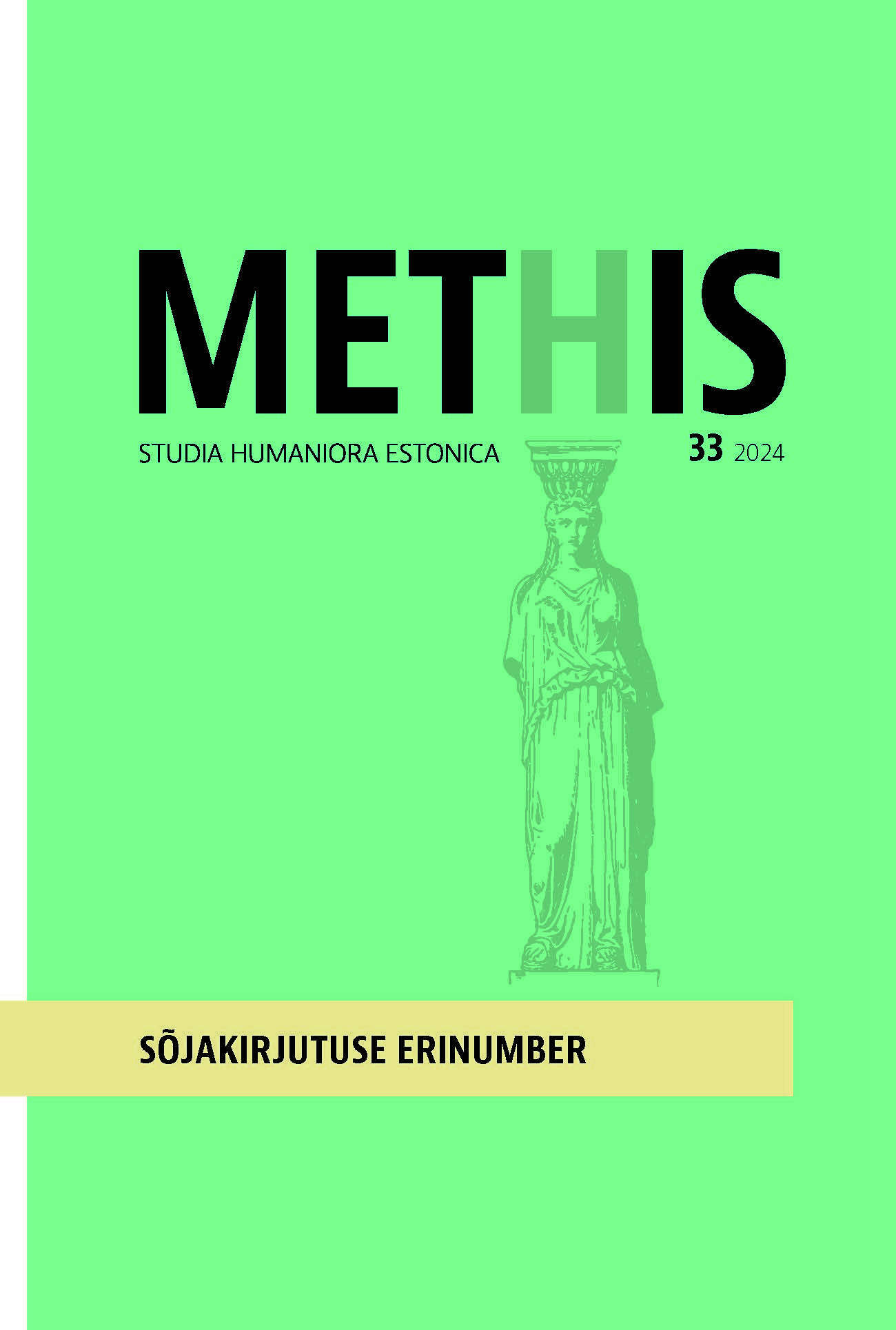Eesti naisliikumine Saksa okupatsiooni ajal 1941–1944: kohandumine ja arendamine / The Estonian Women’s Movement during the German Occupation 1941–1944: Adaptation and Development
DOI:
https://doi.org/10.7592/methis.v26i33.24128Keywords:
German occupation, women’s movement, Home Economics Authority, modernisation, everyday life, Saksa okupatsioon, naisliikumine, Kodumajandusamet, argielu moderniseerimine, kodukultuurAbstract
Teesid: Artikkel käsitleb Eesti naisliikumise eesmärke, tegevussuundi ja tegevuse tulemusi Saksa okupatsiooni (1941–1944) aegse argielu kontekstis. Uurimus tugineb Kodumajandusameti materjalidele Rahvusarhiivis, ametlikele dokumentidele ja ajakirjandusele. Naisliikumise korraldajad kohandusid okupatsioonivõimu struktuuride ja rahastusprioriteetidega ning nende propagandasuundadega, mis haakusid argise toimetuleku ja tsiviliseeriv-ratsionaalsete eesmärkidega – säästlikkus, isetegemine ja isevarustamine, otstarbekas kodukorraldus. Nad säilitasid 1930. aastail välja kujunenud rahvusliku, ent ühtlasi moderniseerumist edendava ja sotsiaalkriitilise hoiaku, millele lisandusid teatud soolise võrdõigusluse nõuded.
Life during the Second World War in Estonia has mainly been studied from the viewpoints of military history, human losses and crimes against humanity, administrative arrangements, and propaganda. There are no comprehensive academic studies of everyday life or the women’s movement. The article provides a preliminary view of women’s initiatives in organising everyday life and counselling during the period of German occupation (1941–1944), focusing on the activities of the Home Economics Office. The analysis is based on manuscripts and documents from the Estonian National Archives, the media, and other official documents.
As the economic priority of the occupation authorities was to support the front, the civil population suffered from a lack of industrial goods and food products, fuel and electricity. In December 1941, a system of food rationing was introduced and farms were obliged to sell their products to the state. People had to rely on an extensive system of natural economy and exchange between the city and the countryside, saving methods and substitute products. Social assistance was built on local pre-war experiences and structures, but also on new organisations that followed the patterns of Nazi Germany. An umbrella organisation was set up called Joint Assistance of the Estonian People (Eesti Rahva Ühisabi) which organised collection campaigns and delivered aid to families in need as well as soldiers at the front. The ERÜ was integrated into the power structures of the German occupation authorities, although its rhetoric also emphasised the need to enforce the Estonian national spirit and the people’s vitality.
Women played a significant role in the efforts to normalise everyday life. In September 1941, the Office of Home Economics was established. This meant a restoration of the structure of the pre-war Chamber of Home Economics (1936–1940), thus the chief women’s organisation did not rely on a model imported from Germany. Through its network of local consultants the office arranged lectures and courses for women. Due to its subordination to and financing through the Board of Agriculture, the main target group was country women. For example, from early 1942 to early 1943 it delivered about 400 courses to about 8,000 participants and 535 lectures to about 12,000 participants. Home economics experts also delivered advice in the media.
The most topical theme was saving, which was also in the focus of the occupation authorities’ official consumption policy. Several exhibitions introduced rational methods of production and consumption, which also served the interests of Nazi propaganda. The Office of Home Economics published leaflets and booklets on nutrition, household laundry, dye plants, etc. Housewives were convinced to cook and eat more vegetarian dishes, although they were not counselled to abandon meat altogether. In addition, nutritional issues were not politicised, unlike in Germany where “natural eating“ became one of the main ideas of fascist biopolitics.
The Woman’s Journal (1943–1944) was also an influential channel for advising and supporting women and homes. It was a predominantly nationally minded journal that largely ignored official propaganda. There are no articles praising life in Germany or the achievements of German women, as were published frequently in the dailies. The advice is practical and, speaking to women, the authors do not underline their obligations but try to support their spirit and keep alive hope for a better future.
The main efforts of the Office of Home Economics were focused on improving women’s situations by reducing their workloads and making their domestic work more effective. For this purpose, the Office launched long-term field studies in farms all over Estonia. Office consultants documented the use of time, with the results indicating that women had excessive workloads and that there was a lack of measures to alleviate this. In 1942, Aino Käsper, deputy head of the Office, published a book in which she made suggestions for organising women’s work on farms in a more rational manner. She described improvements that could be made by better planning of buildings, solving technical problems, and abandoning the traditional gendered division of work and making more investments in the comforts needed for women.
During the period of German occupation, the women’s movement in Estonia adapted to the structures and financing priorities of the German authorities. At the same time, the opinion leaders of this movement clearly prioritised everyday coping strategies – saving, self-provisioning, rational organisation of homes and housework. They maintained their pre-war nationally minded, yet socially critical, attitudes, aiming to empower women even at a time of crisis.


